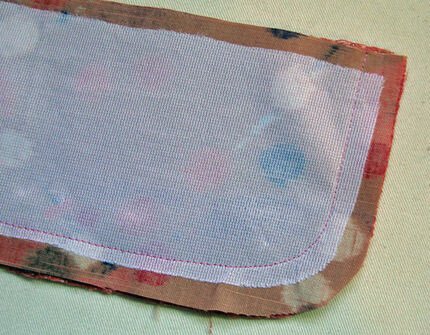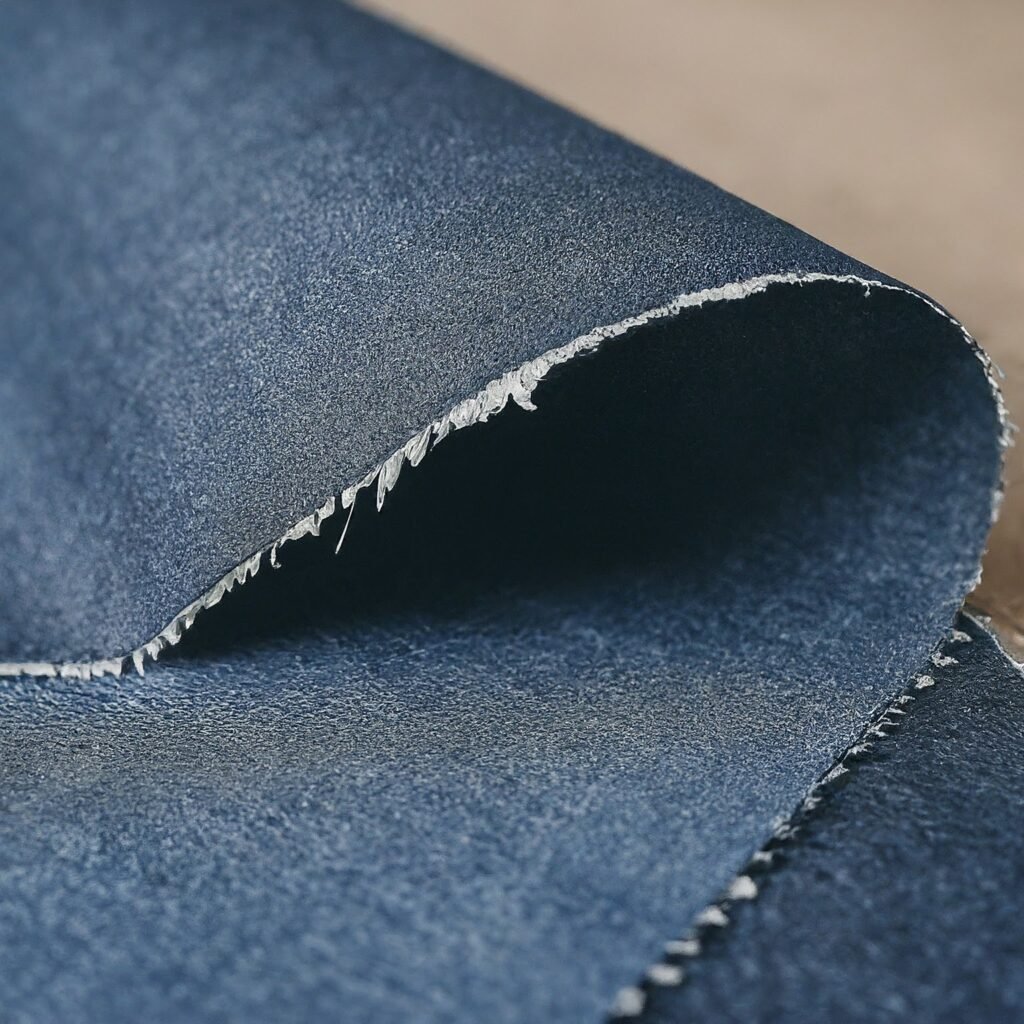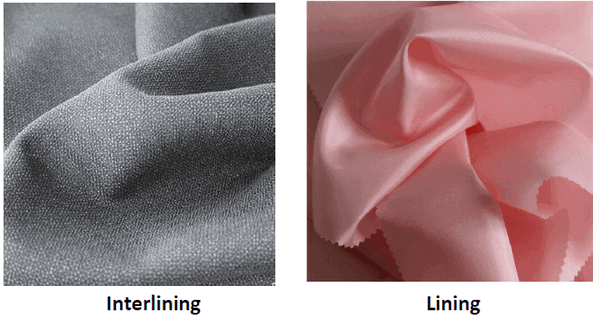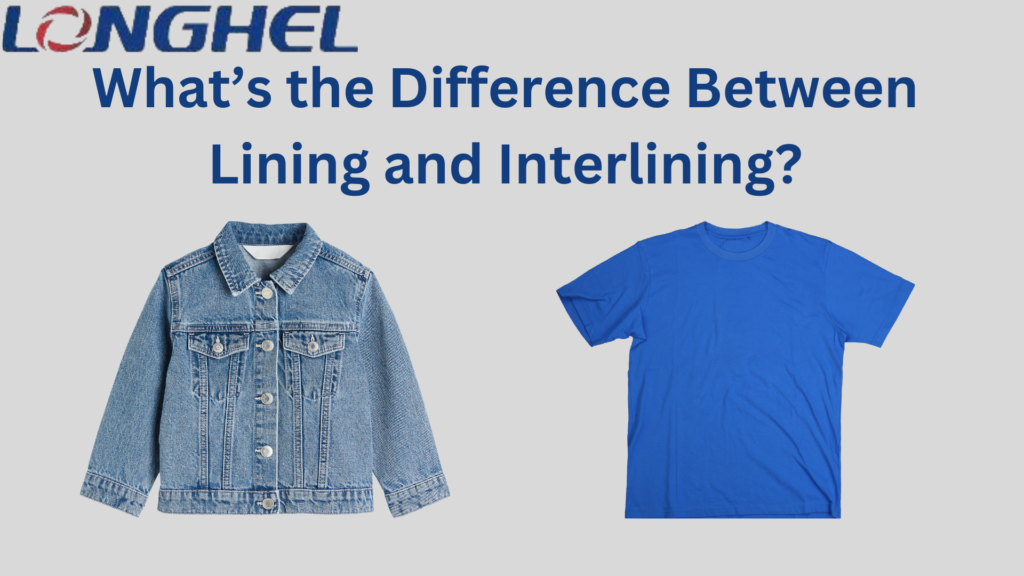Introduction
Lining and interlining are two important materials used in clothing and textile products. They improve comfort, durability, and structure. Many people confuse them, but they serve different purposes.
The lining is a soft, lightweight fabric inside a garment. It covers seams, adds comfort, and gives a polished look. It also helps garments slide on easily and protects delicate outer fabrics. Common lining materials include polyester, silk, cotton, and acetate.
Interlining is an extra layer placed between the main fabric and the lining. It adds thickness, warmth, or stiffness. It is often used in coats, jackets, and structured outfits. Interlining can be sewn in or fused with heat. Some types provide insulation, while others give a crisp shape to collars and cuffs.
Understanding the difference helps in choosing the right material for clothing, bags, and home textiles. Both play a key role in improving quality and functionality. Selecting the right one depends on the design and purpose of the item.

What is Lining, and Why is it Used?
The lining is a layer of fabric sewn inside clothing, bags, or other textile products. It covers raw seams, adds comfort, and improves the garment’s structure. The lining is usually made of smooth, lightweight materials like polyester, silk, cotton, or acetate.
Why is Lining Important?
Lining serves several functions in clothing and textile products. It enhances comfort, durability, and appearance. Many formal and structured garments require lining for a polished finish.
Improves Comfort
The lining makes garments more comfortable by creating a smooth inner surface. It prevents rough seams from irritating the skin. In jackets and coats, it allows easy movement by reducing friction.
Enhances Appearance
Lined garments look more refined. The inner fabric hides stitching and gives a neat look. In skirts and dresses, lining prevents transparency and ensures a smooth drape.
Adds Strength and Durability
Lining protects the outer fabric from wear and tear. It reduces friction between the garment and the body, making the fabric last longer. In pants and suits, the lining prevents stretching and sagging.
Helps with Insulation and Temperature Control
The lining helps regulate body temperature. In winter garments, it provides warmth by trapping body heat. In summer clothes, breathable linings wick away moisture and keep the body cool.
Ensures Better Fit and Movement
Lined clothes hold their shape better. The extra layer supports the outer fabric and prevents sagging. The lining also improves movement by allowing fabrics to glide smoothly over the body.
Makes Dressing Easier
Lined clothes are easier to put on and remove. Slippery fabrics like satin or polyester reduce friction between the garment and the skin. This feature is useful in fitted dresses, jackets, and formal suits.
Protects Delicate Fabrics
Some fabrics, like lace or wool, need protection from wear and body oils. The lining adds a barrier between the fabric and the skin, keeping the garment in good condition.
Where is the Lining Used?
Lining is used in:
- Jackets, coats, and blazers.
- Dresses, skirts, and trousers.
- Bags, purses, and accessories.
- Curtains and home furnishings.

What is Interlining and How Does It Work?
Interlining is a layer of fabric placed between the main fabric and the lining of a garment. It adds thickness, warmth, or stiffness. It is commonly used in coats, jackets, suits, and structured clothing. Interlining improves the strength and durability of the fabric.
Interlining can be made from cotton, polyester, wool, or special insulating materials. It is either sewn into the garment or fused with heat.
Why is Interlining Used?
Adds Warmth
Winter clothing often includes interlining for insulation. It traps body heat and keeps the wearer warm. Coats, gloves, and winter jackets use thermal interlining for extra protection in cold weather.
Improves Structure and Shape
Interlining helps garments maintain their shape. It gives a crisp, tailored look to suits, blazers, and dresses. Collars, cuffs, and waistbands use stiff interlining to prevent sagging.
Increases Durability
Some fabrics need extra support to last longer. Interlining strengthens delicate fabrics, preventing them from stretching or wearing out quickly. It is often used in formal wear and high-quality, tailored garments.
Provides Additional Comfort
Soft interlining makes clothing feel smoother and more comfortable. It prevents rough fabrics from irritating the skin. It also reduces wrinkles and improves fabric drape.
Supports Special Designs
Some designs require added reinforcement. Interlining helps in structured or layered garments, like evening gowns, bridal dresses, and traditional outfits.
Types of Interlining
Fusible Interlining
Fusible interlining has an adhesive backing. It is attached using heat and pressure. It is fast, cost-effective, and widely used in mass production.
Sew-in Interlining
Sew-in interlining is stitched into the fabric. It gives a softer, more natural feel. It is preferred for high-end garments and handmade clothing.
Thermal Interlining
This type provides insulation. It is used in winter jackets, gloves, and outdoor wear. It helps retain body heat in extreme cold.
Canvas and Horse Hair Interlining
These are used in luxury suits and structured garments. They give stiffness and shape to coats and blazers.
Where is Interlining Used?
- Coats and jackets.
- Suits and blazers.
- Collars, cuffs, and waistbands.
- Bags, hats, and accessories.
- Curtains and home textiles.
How Do Lining and Interlining Differ?
Lining and interlining are both used in clothing and textile products. They improve comfort, durability, and structure. However, they serve different purposes.
Lining is a soft fabric inside a garment. It covers seams, adds comfort, and gives a neat finish. Interlining is a hidden layer between the main fabric and the lining. It adds thickness, warmth, or stiffness.
Purpose
Lining improves the look and feel of a garment. It makes clothes easier to wear and protects the outer fabric. Interlining provides extra strength, warmth, or shape. It is mainly used in structured or winter garments.
Placement in the Garment
Lining is attached to the inner side of the garment. It is visible when the garment is open. Interlining is placed between the outer fabric and the lining. It remains hidden.
Fabric Type
Lining fabrics are smooth and lightweight. Common options include polyester, silk, cotton, and acetate. Interlining fabrics vary. Some are soft for insulation, while others are stiff for shape retention. Examples include cotton, wool, canvas, and fusible materials.
Functionality
Lining enhances comfort. It prevents fabric from sticking to the skin and makes clothes easy to put on. It also improves the garment drape. Interlining provides structure. It stiffens collars, cuffs, and waistbands. It also adds warmth to winter clothing.
Application in Garments
Lining is used in:
- Jackets, coats, and blazers.
- Dresses, skirts, and trousers.
- Handbags and accessories.
Interlining is used in:
- Suits and tailored clothing.
- Collars, cuffs, and waistbands.
- Winter coats and insulated jackets.
Types
Lining comes in different finishes, such as breathable, anti-static, or moisture-wicking. It is chosen based on the fabric and season.
Interlining is of different types:
- Fusible Interlining: Attached using heat.
- Sew-in Interlining: Stitched inside for a natural feel.
- Thermal Interlining: Provides insulation.
- Canvas or Horsehair Interlining: Adds stiffness to suits.
Key Differences in Summary
| Feature | Lining | Interlining |
| Purpose | Comfort and appearance | Structure and warmth |
| Placement | Inner layer, visible inside | Between outer fabric and lining, hidden |
| Fabric | Lightweight and smooth | Varies from soft to stiff |
| Use Case | Dresses, suits, bags | Coats, suits, collars |

How Do You Choose Between Lining and Interlining?
Choosing between lining and interlining depends on the garment’s purpose, fabric, and design. Both improve quality, but they serve different needs. Lining enhances comfort and appearance. Interlining adds structure, strength, or warmth. Understanding their roles helps in selecting the right option.
Consider the Garment Type
Lining is best for garments that need a smooth finish and extra comfort. It works well in suits, dresses, skirts, and jackets. Interlining is ideal for structured garments, winter wear, and tailored clothing. It adds thickness to coats and firmness to collars or cuffs.
Think About Fabric Choice
Different fabrics need different support. Thin or delicate fabrics like silk or lace require lining for coverage and strength. Heavy fabrics like wool or denim may need interlining for added shape or insulation. Choosing the right one depends on how the fabric behaves.
Evaluate Climate and Season
The lining helps regulate temperature. Light, breathable lining fabrics are best for summer. They keep garments cool and comfortable. Warm linings add insulation in winter.
Interlining is mostly used in cold-weather garments. Thermal interlining traps body heat and blocks wind. It is essential for winter coats and jackets.
Determine the Required Structure
Some garments need to hold their shape. A tailored blazer or a stiff collar requires interlining. It gives the fabric strength and prevents sagging.
Lining, on the other hand, does not add stiffness. It ensures the garment looks clean and polished without affecting its shape.
Assess Comfort and Wearability
Lining makes garments feel smooth against the skin. It prevents friction and irritation. For formal wear and fitted clothing, a good lining improves movement.
Interlining is hidden and does not affect how the garment feels. It mainly supports the fabric rather than improving comfort.
Look at Cost and Production Needs
Lining fabrics are generally more affordable. They are easier to sew and require less time.
Interlining, especially sew-in or special thermal types, adds cost and labor. Fusible interlining is a quicker and more affordable option for mass production.
Final Decision: Lining or Interlining?
| Factor | Choose Lining If… | Choose Interlining If… |
| Comfort | You want a smooth, wearable finish. | Comfort is not a priority. |
| Structure | The garment should drape naturally. | It needs a stiff or tailored shape. |
| Season | You need breathability. | You need warmth or insulation. |
| Fabric | The fabric is thin or delicate. | The fabric needs extra support. |

Conclusion
Lining and interlining serve different purposes in garment making. Lining improves comfort, gives a smooth finish, and enhances durability. It is a soft inner layer that makes garments easier to wear.Interlining adds structure, strength, or insulation. It is placed between the outer fabric and the lining. It is mostly used in structured or winter clothing.
Choosing between them depends on fabric, season, and garment design. Lining suits breathable and lightweight clothing, while interlining supports stiff or warm garments. Both improve quality and functionality. Understanding their roles helps in making better clothing choices for comfort, durability, and style. Selecting the right one ensures the best results for every garment.
Contact Us to get the best interlining for your garment business.

